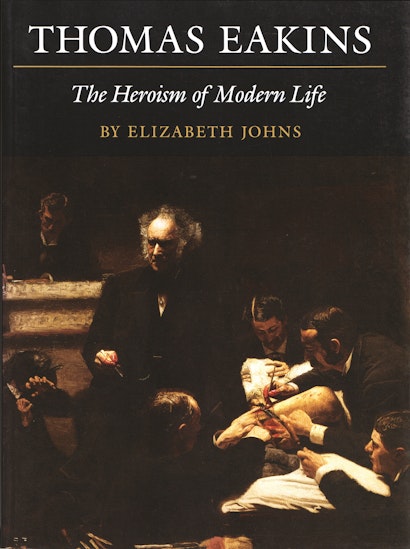Why did Thomas Eakins, now considered the foremost American painter of the nineteenth century, make portraiture his main field in an era when other major artists disdained such a choice? With a rich discussion of the cultural and vocational context of the late nineteenth and early twentieth centuries, Elizabeth Johns answers this question.
"The publication of Thomas Eakins: The Heroism of Modern Life by Elizabeth Johns is an event of some importance, for I believe that this is one of the best studies ever written about an American painter. . . . [The main] chapters function as studies of individual pictures, but they are woven with such great skill that they reflect on nearly all of Eakins's major works and they deal with many of the important issues about him. They also teach us more about Eakins's subjects and his era than one would have thought either necessary or possible."—Theodore E. Stebbins, Jr., The New York Times Book Review
"[This volume] will doubtless increase still further the current popularity of the Eakins's work. . . . It draws out the depth and intensity of meaning and feeling from Eakins's paintings. . . . For many decades no book so thoughtfully considered, so beautifully crafted, and so accurate and illuminating in its conclusions has been written in the American field."—Henry Adams, The Art Bulletin
"To accomplish her goal of explaining Eakins's use of portraiture to affirm the heroic possibilities of life in the American nineteenth century, Johns moves with confidence across a remarkable range of subjects. Her erudite bibliographic essay reviews the principal literature in fields as diverse as sports history, the history of medicine in both Europe and America, American cultural history, the tradition of the portrait, music in the nineteenth century, and the scholarship of American art in general and of Eakins in particular. . . . Johns has here placed Eakins securely in the company of the greatest interpreters of his age."—Mark Pachter, Reviews in American History
"Professor Elizabeth Johns's book is an exemplary study of [Eakins] and an example of the best art historical writing currently being produced. . . . In creating a portrait in writing of Eakins as a hero, Professor Johns thus takes upon herself his heroic mantle."—Katharine Martinez, Art Documentation

